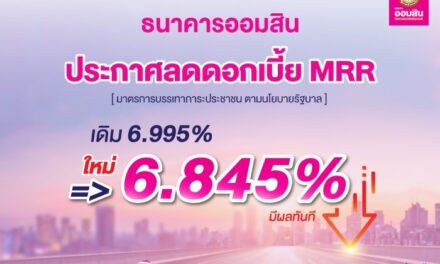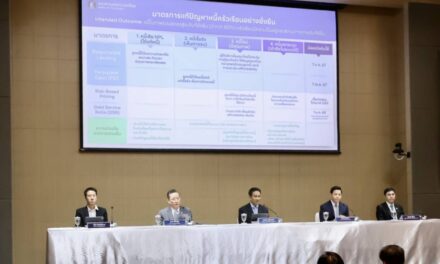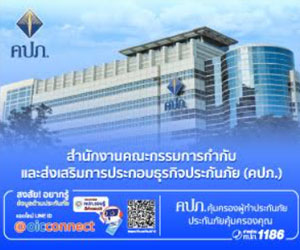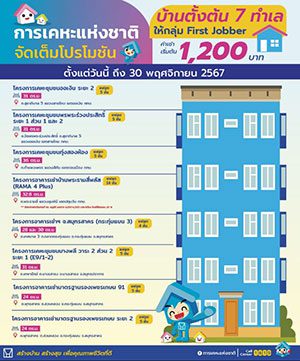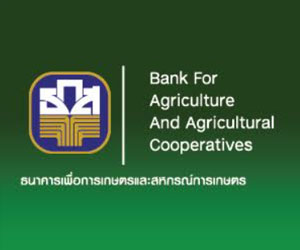เศรษฐกิจโลกมีแนวโน้มเติบโตชะลอลงในช่วงครึ่งหลังของปีนี้หลังจากเติบโตได้ดีในช่วงครึ่งปีแรก ภาพรวมทั้งปี 2567 จะขยายตัว 2.7% และมีแนวโน้ม Soft landing ขยายตัวเร่งขึ้นเล็กน้อยที่ 2.8% ในปี 2568 แม้ว่าขณะนี้ตลาดจะเริ่มกลับมากังวลว่าเศรษฐกิจโลกอาจเข้าสู่ภาวะถดถอย (Hard landing) ได้ โดยเฉพาะในสหรัฐฯ เพราะอัตราการว่างงานเพิ่มขึ้นเร็วจนเข้าเกณฑ์ของดัชนีเตือนเศรษฐกิจถดถอยของสหรัฐฯ อย่างไรก็ดี SCB EIC ประเมินว่าโอกาสที่เศรษฐกิจโลกจะ Soft landing ยังมีสูงกว่ามาก หากดูจากแรงส่งที่ดีของกลุ่มประเทศเศรษฐกิจหลักในช่วงครึ่งปีแรก และข้อมูลเร็วสะท้อนการขยายตัวในระยะข้างหน้า นอกจากนี้ อัตราการว่างงานสหรัฐฯ ที่ปรับขึ้นเร็ว ส่วนหนึ่งเป็นผลจากอุปทานแรงงานเพิ่มขึ้นด้วย นอกเหนือจากความต้องการจ้างงานที่ลดลง
เศรษฐกิจโลกจะมีปัจจัยสนับสนุนสำคัญคือ ธนาคารกลางหลักจะทยอยลดดอกเบี้ยต่อเนื่องในระยะข้างหน้า จากแนวโน้มเศรษฐกิจและเงินเฟ้อที่ปรับชะลอลง ซึ่งจะช่วยดูแลเศรษฐกิจและลดโอกาสเกิดเศรษฐกิจถดถอยได้ โดยในช่วงที่เหลือของปี 2567 และ 2568 ธนาคารกลางสหรัฐฯ (Fed) มีแนวโน้มทยอยปรับลดอัตราดอกเบี้ยนโยบายรวม 200 BPS และธนาคารกลางยุโรป (ECB) มีแนวโน้มลดอัตราดอกเบี้ยต่อเนื่องอีกรวม 150 BPS หลังจากลดไป 25 BPS ในช่วงเดือนมิถุนายน ทั้งนี้อัตราเงินเฟ้อและอัตราดอกเบี้ยนโยบายที่ลดลงจะช่วยให้ความต้องการบริโภคอุปโภคทั้งในและต่างประเทศสูงขึ้น
อย่างไรก็ดี ปัจจัยการเมืองระหว่างประเทศจะกดดันให้เศรษฐกิจโลกขยายตัวชะลอลงและเปราะบางมากขึ้นในระยะปานกลาง ทั้งจากความขัดแย้งทางภูมิรัฐศาสตร์ที่ยืดเยื้อ นำไปสู่การปรับห่วงโซ่อุปทานและการค้าโลก รวมถึงการออกมาตรการกีดกันระหว่างประเทศเพิ่มขึ้นและขยายมิติ ซึ่งจะส่งผลให้อัตราเงินเฟ้อและอัตราดอกเบี้ยนโยบายของเศรษฐกิจหลักส่วนใหญ่ไม่กลับไปอยู่ในระดับต่ำเช่นค่าเฉลี่ยในอดีตได้อีก ทั้งนี้การดำเนินนโยบายระหว่างประเทศของสหรัฐฯ หลังการเลือกตั้งทั่วไปปลายปีนี้จะเป็นปัจจัยสำคัญที่กำหนดทิศทางการค้าโลกในระยะข้างหน้า โดยเฉพาะหากทรัมป์ชนะการเลือกตั้งจะส่งผลให้โลกแบ่งขั้วเศรษฐกิจและห่วงโซ่อุปทานเร็วขึ้น
SCB EIC ประเมินเศรษฐกิจไทยขยายตัวต่ำในปี 2567 และ 2568 ที่ 2.5% และ 2.6% ตามลำดับ ในระยะต่อไปภาคการท่องเที่ยวยังเป็นแรงส่งหลักที่เหลืออยู่ของเศรษฐกิจไทย SCB EIC ประมาณการจำนวนนักท่องเที่ยวต่างชาติปี 2568 ที่ 39.4 ล้านคน โดยการเติบโตของจำนวนนักท่องเที่ยวต่างชาติยังถูกกดดันจากแนวโน้มการกลับมาของนักท่องเที่ยวจีนแบบกรุ๊ปทัวร์ ขณะที่การส่งออกไทยปี 2568 ยังเติบโตต่ำกว่าในอดีต ส่วนหนึ่งจากความสามารถในการแข่งขันที่ลดลง การผลิตของภาคอุตสาหกรรมที่แม้เริ่มทยอยฟื้นตัวตามการส่งออกสินค้าที่ปรับดีขึ้นบ้าง แต่ยังเผชิญแรงกดดันจากสินค้าคงคลังสูงและอุปสงค์ในประเทศเปราะบาง การลงทุนภาคเอกชนคาดว่าจะหดตัวเล็กน้อยในปีนี้ แต่จะกลับมาขยายตัวได้ในปีหน้า ตามมูลค่าการออกบัตรส่งเสริมการลงทุนของ Board of Investment ที่ปรับดีขึ้นมาก แต่การลงทุนจะยังเติบโตได้ไม่มากนัก จากภาคก่อสร้างที่ยังมีแนวโน้มขยายตัวต่ำและการลงทุนยานพาหนะที่ใช้เวลาฟื้นตัวจากภาวะสินเชื่อตึงตัว สำหรับการบริโภคภาคเอกชนจะแผ่วลงมากในสินค้าคงทน โดยเฉพาะยอดขายรถยนต์ที่หดตัวต่อเนื่อง ประกอบกับรายได้ภาคเกษตรมีแนวโน้มกลับมาหดตัว ตามทิศทางราคาสินค้าเกษตรสำคัญที่จะลดลงในปีหน้า ทั้งยังถูกกดดันจากสินเชื่ออุปโภคบริโภคที่ชะลอลงต่อเนื่องเพราะคุณภาพสินเชื่อด้อยลง สอดคล้องกับความเชื่อมั่นผู้บริโภคต่อเศรษฐกิจไทยปีหน้าจากผลสำรวจ SCB EIC Consumer survey 2567 ที่ยังต่ำ จึงมีแนวโน้มจะลดการใช้จ่ายสินค้าและบริการไม่จำเป็นมากขึ้น การกระตุ้นเศรษฐกิจของรัฐบาลเพิ่มเติมจะมีข้อจำกัดมากขึ้นจากภาระการคลังสูง โดย SCB EIC ประเมินว่าขณะที่โครงการกระเป๋าเงินดิจิทัลใช้วงเงินสูง แต่ช่วยกระตุ้นเศรษฐกิจได้ไม่เต็มที่และชั่วคราว ส่งผลให้หนี้สาธารณะไทยอาจมีแนวโน้มชนเพดานในปี 2570
นโยบายเศรษฐกิจเร่งด่วนของ ครม. ชุดใหม่เป็นการสานต่อนโยบาย ครม. ชุดก่อน โดยมีจุดเน้นมากขึ้นที่ภาคครัวเรือนและภาคธุรกิจกลุ่มเปราะบาง SCB EIC ประเมินชุดนโยบายกระตุ้นเศรษฐกิจของรัฐบาลในระยะสั้น จะส่งผลบวกต่อธุรกิจที่เกี่ยวข้องกับการบริโภค ท่องเที่ยว และภาคเกษตร ขณะที่ธุรกิจที่มีแรงงานขั้นพื้นฐานในสัดส่วนสูงจะได้รับผลกระทบด้านต้นทุน และธุรกิจพลังงานอาจได้รับผลกระทบด้านรายได้ สำหรับนโยบายส่งเสริมความสามารถในการแข่งขัน จะส่งผลบวกต่อธุรกิจที่เกี่ยวข้องกับโครงสร้างพื้นฐาน อุตสาหกรรมที่สอดรับเทรนด์โลก และอุตสาหกรรมแห่งอนาคต สำหรับนโยบายสิ่งแวดล้อมยังเป็นทั้งความท้าทายและโอกาสให้หลายธุรกิจต้องปรับตัว
ภาคธุรกิจไทยยังต้องเผชิญความท้าทายเชิงโครงสร้าง ฟันเฟืองการขับเคลื่อนเศรษฐกิจไทยกำลังเผชิญความท้าทายจากรอบด้าน โดยเฉพาะ 1) อุตสาหกรรมยานยนต์ที่อาจสูญเสียกำลังการผลิตในประเทศไปราว 40% หากการปรับตัวของค่ายรถยนต์ไม่เท่าทันกับกระแสนิยมที่กำลังเปลี่ยนไป และ 2) ผู้ประกอบการ SME เผชิญแรงกดดัน จากกำลังซื้อในประเทศที่เปราะบาง อีกทั้ง ยังถูกซ้ำเติมจากการตีตลาดจากสินค้านำเข้า กระบวนการผลิตและการตลาดล้าสมัย ดังนั้น การผลักดันให้ภาคธุรกิจเหล่านี้เติบโตได้อย่างยั่งยืนต้องพึ่งพามาตรการกระตุ้นเศรษฐกิจในระยะสั้น ควบคู่กับนโยบายยกระดับความสามารถทางการเเข่งขันในระยะยาว
SCB EIC ประเมิน กนง. มีแนวโน้มเริ่มลดอัตราดอกเบี้ยนโยบายในเดือน ธ.ค. และต่อเนื่องช่วงต้นปีหน้าไปอยู่ที่ 2% จากสัญญาณอุปสงค์ในประเทศที่ชะลอตัวชัดเจนขึ้น ส่วนหนึ่งเป็นผลต่อเนื่องจากภาวะการเงินตึงตัวนาน สำหรับค่าเงินบาท ช่วงที่ผ่านมาแข็งค่าเร็วหลังดัชนีเงินดอลลาร์สหรัฐอ่อนค่า ราคาทองคำสูงขึ้น และความกังวลการเมืองไทยที่คลี่คลาย ในระยะสั้นเงินบาทอาจอ่อนค่าเล็กน้อยจากปัจจัยเศรษฐกิจของสหรัฐฯ ก่อนกลับสู่เทรนด์แข็งค่าตาม Easing cycle ของสหรัฐฯ สำหรับ ณ สิ้นปี 2567 และ 2568 ประเมินเงินบาทอยู่ในกรอบ 34 – 34.5 และ 33 – 34 บาทต่อดอลลาร์สหรัฐ ตามลำดับ
———————————————————————————————————————————————————————————————————–
The Thai economy in 2025 with fading key growth drivers
The global economy is expected to slow in the latter half of this year following robust growth in the first half. Overall, global growth for 2024 is projected at 2.7%, with a slight uptick to 2.8% in 2025, indicating a soft landing. However, concerns over a potential hard landing, particularly in the U.S., are resurfacing due to rapidly rising unemployment rate, triggering recession warning indicators. Nevertheless, SCB EIC assesses that a soft landing remains more likely due to the strong momentum from major economies during the first half of the year and leading indicators suggesting continued growth in the near future. Additionally, the rapid rise in unemployment in the U.S> is partly due to a growing labor supply and not just solely a decline in hiring demand.
A key supportive factor for the global economy is the gradual reduction of interest rates by major central banks, as economic growth and inflation slow down. This trend will help cushion the economy and reduce the likelihood of a recession. By the end of 2024 and into 2025, the Federal Reserve (Fed) is expected to lower its policy rate by a total of 200 basis points (bps), while the European Central Bank (ECB) is likely to reduce its rate by 150 bps after a 25-bps cut in June. These lower inflation rates and interest rate reductions are expected to boost both domestic and international consumption.
However, international political tensions will likely slow global economic growth and increase vulnerability in the medium term. Lingering geopolitical conflicts will lead to adjustments in global supply chains and trade, accompanied by a rise in protectionist measures. These factors will hinder inflation and policy rates in most major economies from reverting to historically low averages. Post-election U.S. foreign policy will play
a significant role in shaping the future dynamics of global trade. A Trump victory could hasten economic decoupling and global supply chain reconfiguration.
SCB EIC projects that Thailand’s economy will expand by a modest 2.5% and 2.6% in 2024 and 2025, respectively. Tourism will remain the primary driver for the Thai economy. SCB EIC forecasts 39.4 million foreign visitors in 2025, although this growth will be constrained by the slow return of Chinese group tours. In contrast, Thailand’s export growth in 2025 will remain weaker than in the past, partly due to declining competitiveness. While industrial production is gradually recovering in line with improved exports, it continues to face headwinds from high inventories and weak domestic demand. Private investment is projected to contract slightly this year but should resume modest growth next year, supported by a significant increase in Board of Investment (BOI)’s certificate approvals. However, overall private investment will remain subdued due to slow growth in construction and delayed recovery in transporation investment, constrained by tight credit conditions. Private consumption will also slow, particularly in durable goods , especially automobiles, where sales continue to decline. Agricultural incomes are expected to contract due to declining prices of key commodities next year, further pressured by weakening consumer credit due to deteriorating credit quality, reflecting low consumer confidence, as seen in the SCB EIC Consumer survey 2024. This suggests an increasing tendency for consumers to cut back on non-essential goods and services spending. Government efforts to stimulate the economy will face greater fiscal constraints. SCB EIC estimates that while the digital wallet scheme involves substantial budget, its economic impact will be temporary and somewhat limited, potentially leading Thailand’s public debt ratio to reach the ceiling by 2027.
Most of the new government’s immediate economic policies reflect a continuation of the previous administration’s policies, albeit with an increased emphasis on supporting vulnerable households and businesses. SCB EIC assesses that short-term stimulus measures will benefit businesses related to consumption, tourism, and agriculture. Meanwhile, industries that rely heavily on low-wage workers are likely to experience increased cost pressures, and the energy industry might witness a drop in revenue. On the other hand, competitiveness-boosting policies will favor infrastructure-related businesses, industries aligned with global trends, and future industries. Environmental policies will pose both challenges and opportunities, requiring numerous businesses to adapt.
Structural challenges continue to weigh on the Thai economy. Specifically, 1) the automotive industry could lose around 40% of domestic production capacity if manufacturers fail to adapt to shifting market preferences, and 2) SMEs will face increasing pressure from weak domestic demand, compounded by competition from imports and outdated production and marketing practices. To ensure sustainable growth, these sectors will require short-term stimulus combined with long-term policies to enhance competitiveness.
SCB EIC anticipates the Monetary Policy Committee (MPC) to cut the policy rate in December, followed by an additional reduction early next year, lowering it to 2% as domestic demand softens. This is partly influenced by prolonged tightness in financial conditions. The Thai baht has appreciated recently, driven by a weaker U.S. dollar, higher gold prices, and easing concerns over Thai political stability. In the short term,
the baht may weaken slightly due to U.S. economic factors but will return to an appreciation trend as the Fed’s rate cuts cycle take place. By the end of 2024 and 2025, the baht is projected to move within the ranges of 34-34.5 and 33-34 baht per USD, respectively.




